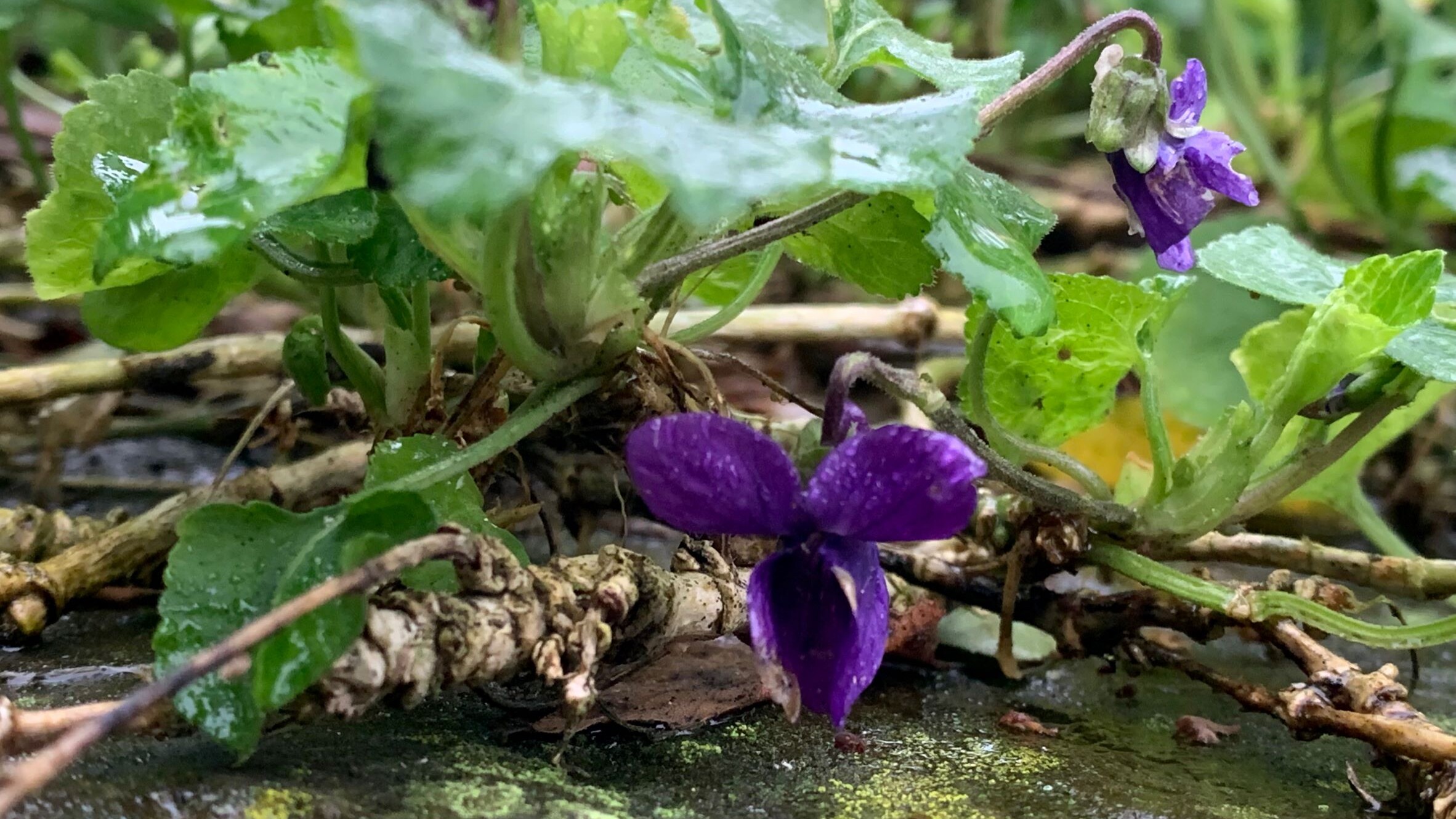Scientific Name: Viola odorata
Common Name: Sweet Violet
Family: VIOLACEAE
Origin: Garden cultivar
Cultivar: ‘Czar’
Violets are associated with the ancient Greek poet Sappho. This is because of the poet’s recurring references to the flower and the colour violet in her writing. She was even said to have “violet hair”, meaning that her hair was dark. Sappho was said to be the first woman to love other women; the term “lesbian” is a reference to Sappho because she was from the Greek island of Lesbos. The colour violet has long been associated with LGBTQ+ culture. In the play The Captive (1926) one female character gives another female violet flowers as a symbol of affection. Members of the cast were arrested during a production of the play for obscenity, resulting in the withdrawal of the play. Like the term ‘lavender’, ‘violet’ was used as a slang word for lesbian.
Violets have perfect (also called androgynous or bisexual) flowers, meaning that they have both male and female reproductive organs in the same flower. Violet flowers have a sweet, powdery, refreshing scent that comes from the aroma compounds called ionones. Violet flowers, as well as the greener scented violet leaf, are often used in perfumery.
Further Reading:
https://daily.jstor.org/four-flowering-plants-decidedly-queered/

